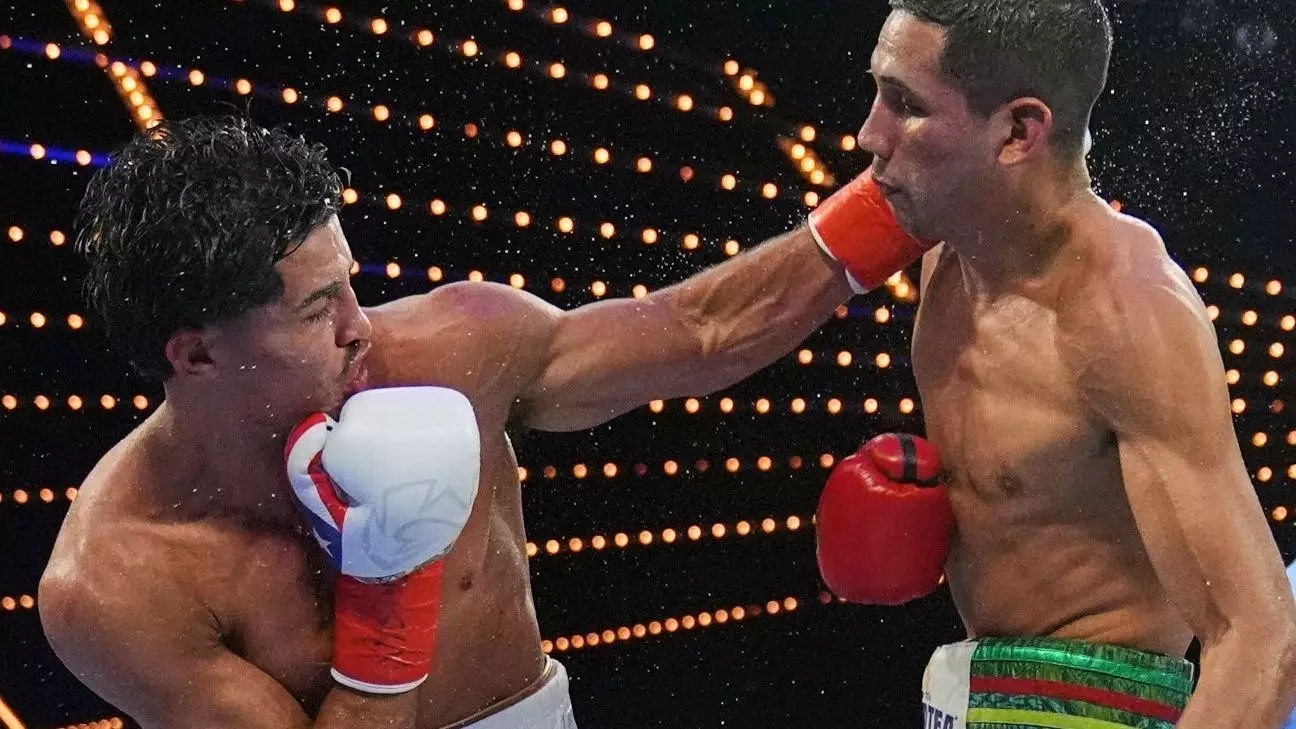Xander Zayas’s recent victory at Madison Square Garden was more than a fight; it was a declaration. At just 22 years old, Zayas has seized the spotlight, showcasing that age and raw talent can forge champions, even amidst a sea of seasoned contenders. His dominating decision over Jorge Garcia Perez wasn’t merely about securing a belt; it was about asserting himself as the future of Puerto Rican boxing. This victory symbolizes something more profound—an affirmation of potential that transcends the ring. Zayas embodies the hope that hard work and relentless ambition can elevate a young athlete to greatness in a sport often monopolized by aging veterans. His mastery of elusive footwork, precise counterpunching, and strategic ring control reveals a boxer who is both technically gifted and emotionally driven.
However, beneath this veneer of youthful brilliance lies an important question: are we witnessing a genuine superstar on the rise, or merely an exceptionally talented prodigy riding the wave of hype? The decision win, while convincing, does not negate the fact that Garcia Perez capitalized on moments of vulnerability, and the fight revealed some gaps in Zayas’s defensive discipline. The boxing world tends to celebrate young fighters prematurely, driven by narrative and media hype rather than a sustained pattern of dominance. History teaches us that the peril of over-glorifying young champions is that their careers can quickly falter when they encounter a well-prepared, experienced opponent who studies their every move.
Yet, Zayas’s success embodies an optimistic, liberal-leaning perspective: fostering young talent and creating more opportunities for diverse voices to rise in boxing’s traditionally exclusive hierarchy. Some may argue that his victory signifies progress—not only for Puerto Rican boxing but for the sport’s broader culture—highlighting resilience, youth, and hope in a landscape often plagued by stagnation.
The Perils of Elevated Expectations and Market-Driven Promises
Despite the electric atmosphere and the headline-grabbing achievement, the narrative of Zayas’s rise invites skepticism. Too often, boxing has been characterized by quick ascents that eventually lead to disappointment or deferred expectations. The sport’s unpredictability is notorious, and emerging champions are frequently derailed by injury, complacency, or unanticipated elite competition. Zayas’s age makes him susceptible to the weight of expectation, which can be as burdensome as it is motivating.
Moreover, the boxing industry’s commercial interests are both a boon and a bane. The pursuit of lucrative fights, titles, and global recognition risks turning athletes into commodities rather than genuine competitors. There is a danger that the focus shifts from meaningful progression to spectacle-driven narratives that prioritize marketability over skill. Zayas, like many young fighters, might be pressured into taking unnecessary risks or chasing quick fame, risking burnout or loss of integrity.
From a liberal perspective, the sport’s systemic challenges—such as underfunding grassroots programs and insufficient regulation—compound these issues. Supporting the development of fighters like Zayas requires not just celebrating their victories but investing in the long-term health of boxing, ensuring that talent is cultivated with respect for safety and fairness. It’s critical to scrutinize whether the boxing establishment is genuinely committed to nurturing potential or merely capitalizing on it.
Beyond the Ring: The Broader Cultural and Social Significance
Zayas’s triumph transcends personal achievement, touching on deeper societal themes. As a Puerto Rican athlete representing a proud island with a storied boxing history, his success offers a beacon of hope and unity. In a world often fractured by political and economic struggles, moments like this serve as a reminder that perseverance and dedication can forge respect beyond borders.
However, a critical eye must also recognize that boxing remains an inherently risky sport, riddled with issues of violence, addiction, and exploitation. Young athletes like Zayas must navigate a treacherous landscape that can undermine their health and well-being despite their victories. It’s incumbent upon the sport’s stakeholders to ensure that ambition does not come at the expense of safety or ethical considerations.
From a center-left liberal standpoint, supporting athletes like Zayas involves advocating for reforms that promote equitable opportunity, health protections, and community investment. Championing diverse talents should not only be about celebrating their success but also about ensuring that the infrastructure exists to sustain their careers and protect their futures. Only then can boxing evolve into a sport that truly reflects the ideals of resilience, opportunity, and social mobility that liberal values aim to uphold.
In the end, Xander Zayas’s rise is both inspiring and cautionary. It underscores the transformative power of youthful ambition but also highlights the vulnerabilities inherent in the sport. As he steps into the spotlight, the true challenge lies in ensuring that this moment sparks a genuine movement toward a safer, fairer, and more inclusive boxing landscape.

Leave a Reply